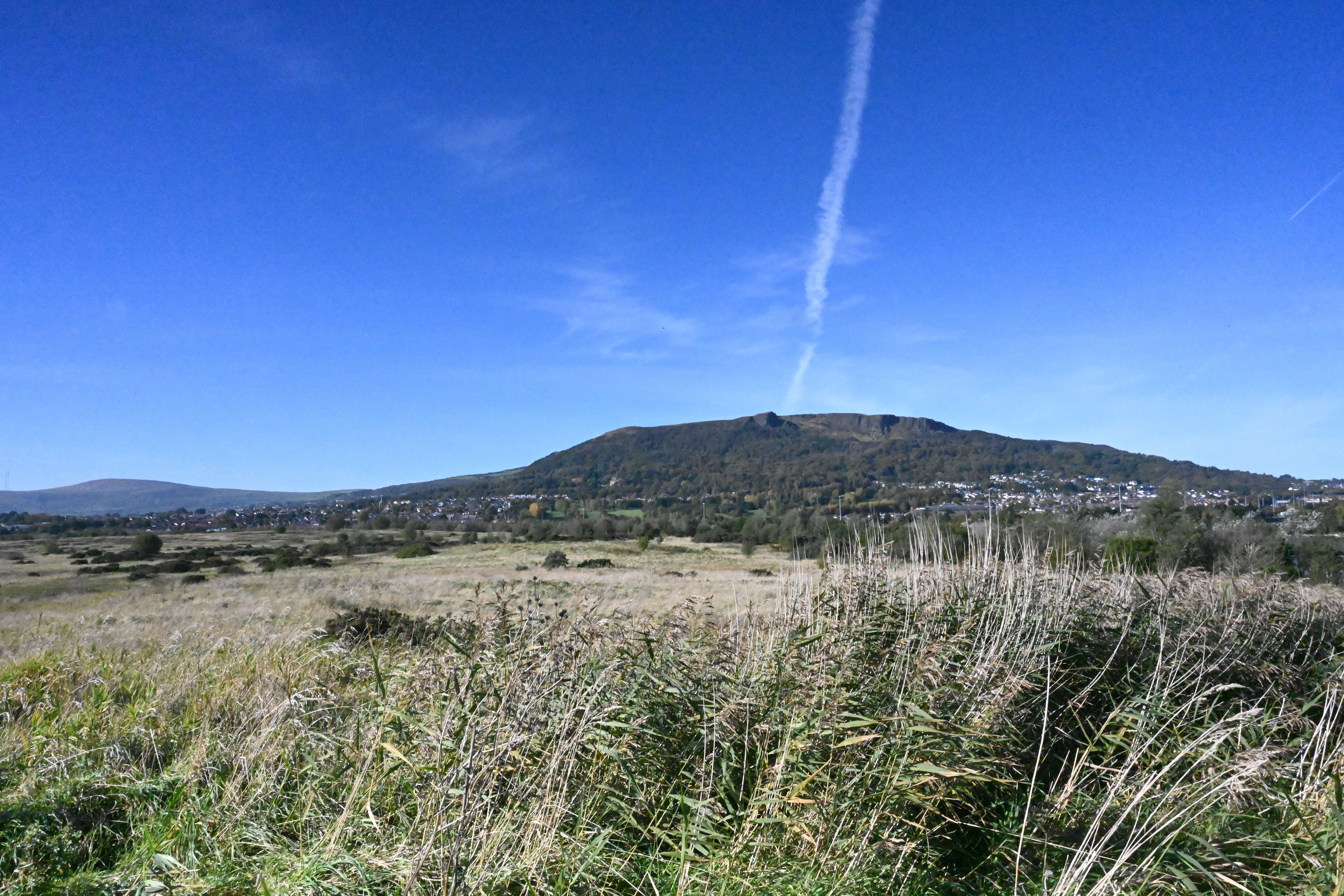IT looks more like the Serengeti than Belfast. You can barely even see a house – and that’s in a city of three-quarters of a million people.
This is the vista that lay before Dúlra on Tuesday morning when he went for a dander along Belfast Lough. It may have been halfway through October, but it was like midsummer.
Dúlra had wrapped up as you must do at this time of year, but it wasn’t long before he was peeling off the layers. And he was amazed to see swarms of flies still filling the air – even if the birds that feed on them, the swallows, swifts and martins, are long gone.
From the lough, you can gaze back across the sweeping Belfast Hills, with much of the housing out of sight in the valley. That glorious green view disguises a multitude of wrongs – this is a city to be proud of for many reasons, but our treatment of wildlife and the environment are not among them.
Still, those concerns were for another day as Dúlra lapped up the sun and the sights.
Some of the reclaimed land around Belfast Lough is off-limits to visitors, which means it’s a beacon for nature. And it’s a massive area – there are 340 acres in Giant’s Park. A film studio is the only building here, although two more are going up alongside it. But it still leaves 300 acres. Of course no city person has any idea what an acre is, so Dúlra used Google to convert it into something a bit more familiar – football pitches. And, incredibly, that land is the size of 227 pitches.
Created over decades as bin lorries dumped the city’s waste here, it was eventually covered with a layer of soil. But the decomposing waste still produces dangerous gases, so nothing can be built here yet. Dúlra hopes it continues to produce those dangerous gases forever and so becomes an inner-city refuge for nature, one that our wildlife desperately needs.
The area of grassland is so vast that it’s surely attracted the attention of rare birds of prey that still cling on to our hilltops in small numbers, like the hen harrier. Dúlra once spotted a brown female hen harrier – cromán na gcearc in Irish – on Divis, but has never to his knowledge set eyes on the male. And that is a bird that you’d have to see to believe.
The male hen harrier seems to break the prevailing raptor colour rules of browns and russets. Instead, it’s all grey with black wingtips. A truly mesmerising bird. Dúlra often scans the Giant’s Park with his bins from a distance, imagining the massive bird hovering above the swaying grass.
Belfast Lough
On Tuesday there was a bird of prey there, the much smaller but no less beautiful kestrel. If you want to spot a kestrel here, keep an eye out for the squawking crows that constantly harass it, focus on them in the distance and you’ll soon see their raptor foe.
The small grassland birds here like meadow pipits and stonechats are forced to sit tight by the constant threat of aerial attack, but it’s a completely different matter at the shore. With the sun high in the blue sky and barely a wave on Belfast Lough, this was an unexpected bonus for the birds that are so used to stormy seas.
Ranks of seabirds sat at the lagoons here, simply resting. Cormorants were in classic pose with their wings outstretched, sunning themselves. A curlew’s plaintive call floated across the water – the single bird was sitting at the edge of a flock of oystercatchers.
There was a family of giant eider ducks out at sea, and we identified godwits, redshank and a couple of greenshank among the waders that dotted the coastline as far as the eye could see. Ireland no longer provides breeding grounds for many of these birds, but thankfully other countries do. And so rather than spend summer here raising their families, they arrive in autumn and return to more welcoming lands in spring.
Then one seabird arrived to steal the show. As white as snow and as elegant as a ballet dancer, the egret landed right in the centre of the lagoon, as if unaware it was the star of the show. Once persecuted into extinction in Ireland, they’ve only recently made their way back to brighten up our lives.
This bird looked bigger than normal and Dúlra hoped he might have stumbled on something as rare as that male hen harrier. It’s predicted that the return of the little egret will herald the way for its larger cousin, the great white egret. As the name suggests, it’s bigger, but it’s not always easy to tell size at a distance. The other key difference between the two birds is the colour of their beak – the little one’s beak is black, the great egret’s is yellow. Dúlra pointed the bins, heart pounding. Only a couple of great white egrets have been recorded in Ireland, could this be Dúlra’s big break? He’d be famous, heralded, celebrated by birders across the land. He focused, praying for a yellow beak... and it was... black!
He never thought he’d ever be disappointed to see a beautiful little egret.
Still, it was a brilliant couple of hours. Winter of course is on its way, but as the storms gather Dúlra will be warmed by the memories of that glorious summer’s day in October.
• If you’ve seen or photographed anything interesting, or have any nature questions, you can text Dúlra on 07801 414804.







